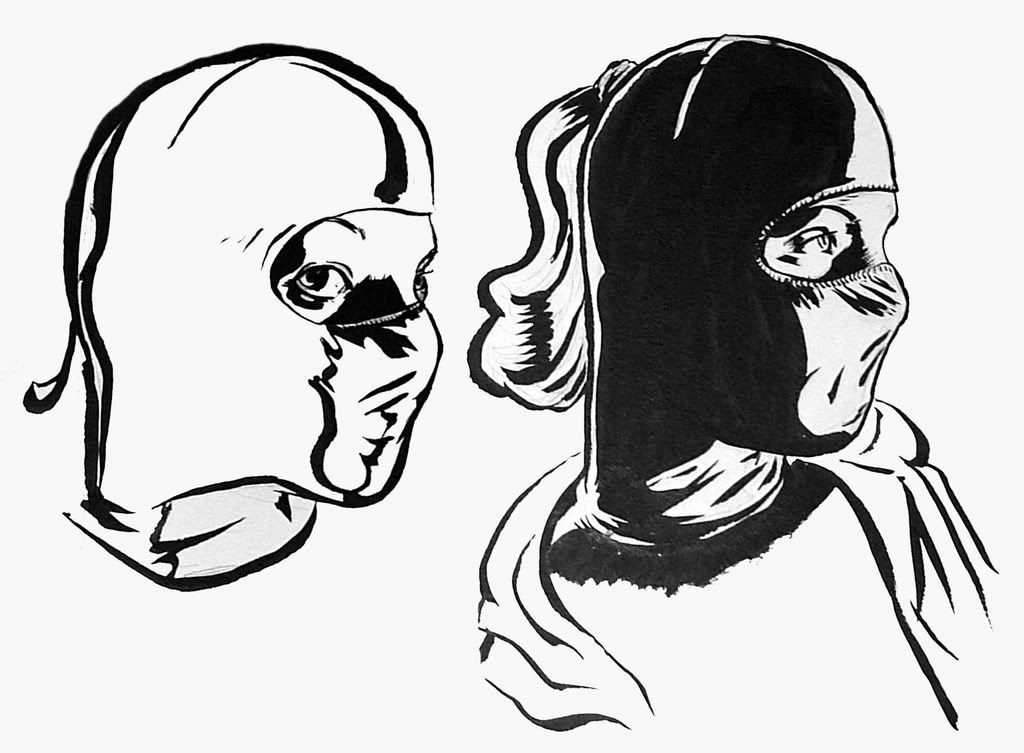Needless to say, when I started reading Michael Earl Craig’s Yes, Master the usual anti-surrealism grunts began to escape my lips. So I forced my fiancé to read some of the poems and show me how and why they are surrealism. I am going to assume that others have had a hard time “getting” surrealism so here are some things that he told me that helped me grasp the idea (kind of…):
• A common surrealist saying is that surrealism is the unexpected meeting of an umbrella and a sewing machine on a dissection table
• Surrealism has to make just enough sense to make sense (it made sense to me when he said it, although writing it out makes it not seem to make sense… maybe that is a surrealist way of explaining surrealism.) For example, it is like saying something smells like purple. It's a fundamental truth that you can only explain in a way that doesn't make sense.
• Surrealism takes you where you least expected to go
With those explanations in mind, I jumped back into Craig, and I think I can now see some of the ways characteristics of surrealist poetry.
“Piece” was one of my favorite Craig poems even without the surrealism explanation. One of my favorite parts is, “After living with it for a short while he had the house removed” (4). Pre-explanation, I thought this was an interesting line, and after talking to Nathan, I realized that this is part of what makes this a surrealist poem: it is unexpected. Who would think that somebody would remove a house from a particular piece of art. From then on, the poem is harder to relate to, because the whole idea of removing a house and just putting pieces of art on the lawn is so far beyond reality. At the same time, however, it still kind of makes sense. It is not so absurd that the reader cannot imagine somebody doing this. The last stanza also seem hard to grasp but a vivid image nonetheless: “Because the neighbors were believers they could say among other things that they saw his strange wheelbarrow parked outside in the snow with its human ankles for handles” (4). In some strange way, this could be real, but it also hard to grasp and vague. What exactly did the neighbors believe in? Is the wheelbarrow part of the art? Are the human ankles the “he” found throughout the poem or are they also part of the artwork? I can almost see the wheelbarrow with the ankle handles and the neighbors peering out through the curtain at it, but I am still unclear as to what it actually is.
Throughout the rest of the book I just marked places where there were unexpected turns or lines or stanzas that seemed to come out of nowhere. Here are some of the interesting twists and turns Craig takes us on:
• In “The Interview”: “They make me think of potatoes, it’s the first thing I think of, and they’re in my underpants” (8). Unexpected: takes reader by surprise. Not sure what it means, but it's an amusing stanza
• In “Axiom”: “For who among us has not stood on the bank and thought about it, and wondered about the others? Then a
meteor shower came down and hit the man” (9). This is an unexpected event/turn in the poem.
• In “In the Januaried Mountains”: “I think about how a butterfly, if permitted, will crawl neurotically all over a soldier’s face for half an hour” (11). Well, I guess that could happen, but I never imagined somebody would think this or assume a butterfly would do this.
• The whole poem “Edward” (20) seemed random and didn’t seem to connect, in any obvious way anyway.
• In “Glass of Vodka”: What is the word for when a nun rolls a boulder away from the mouth of a cave or tomb?” (31) Here there is imagery of Jesus’s tomb; however, before Jesus rose, there was no Catholicism and thus no nun to roll away the boulder. Also, there is no word for this, and why would anybody think there would be? At this point in the poem, the person in it is looking at somebody through the bottom of a glass, so I get the feeling that this poem is about distorted imagery (maybe explaining the presence of a nun at Jesus’s tomb).
• In “Albert Often Cracked His Knuckles,” there are a few changes. First, there is a change from third person to first person: “The man on the ground started laughing, which was uncharacteristic for this man, I know because I am him” (34). There is also a change when there is “a knock at the bedroom door” forcing the reader to think this whole thing has been somebody else’s writing. Then the poem ends with “’No, Albert, this isn’t your mother” (35) making the knocking at the door an actual part of the story.
• In “We Picture the President,” Craig describes the president doing very specific things and assuming that everybody pictures him doing this. However, the things are so strange and specific, I doubt anybody besides Craig has thought about it, despite the fact that he seems to assume everybody has thought about it.
I’ll stop here before this paper becomes too long. I did also want to mention that there is a surrealist game called An Exquisite Corpse that is very interesting and actually fun. Let me know if you want to know more about it. We may even be able to play it over blogs.
Here is a picture of one of Nathan's surrealist-inspired sculptures:


1 comment:
I can't believe no one has commented on the man in the hotdog bun yet. Very surreal.
Post a Comment